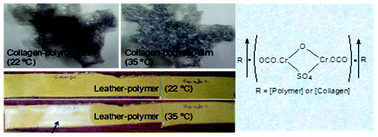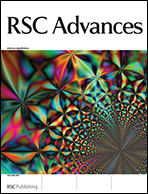Chromium-assisted immobilization of N-isopropylacrylamide-based methacrylic acidcopolymers on collagen and leather surfaces: thermo-responsive behaviour†
Abstract
In the present paper, we report the non-covalent immobilization of pH and temperature responsive poly(N-isopropylacrylamide)-co-methacrylic acid on a


 Please wait while we load your content...
Please wait while we load your content...